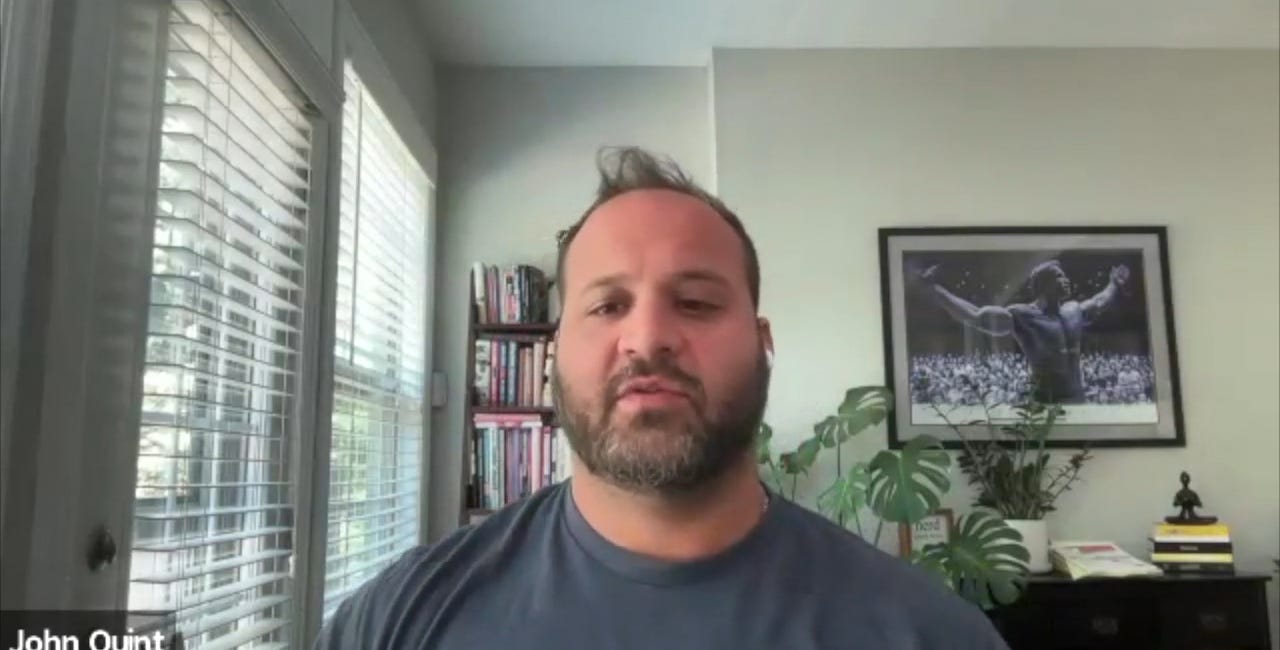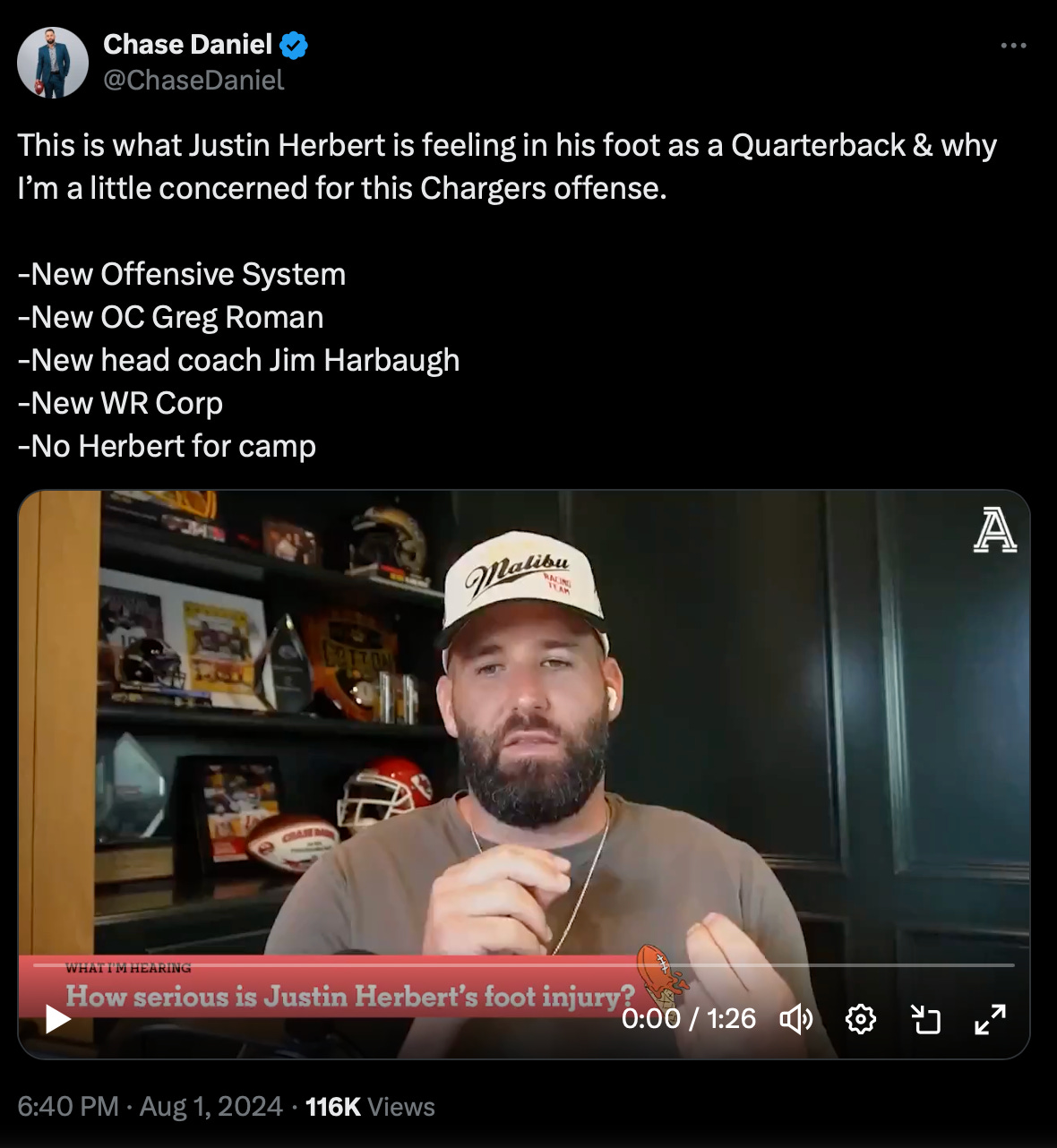The NFL's Reactive Strength Problem: A Preview of What's to Come This Season
The Justin Herbert Case: Part 1
New Season, Same Reactive Strength Problem
Several Absolute readers contacted us about Justin Herbert, the quarterback for the Los Angeles Chargers, who unfortunately suffered an injury to his right foot. It's encouraging to see that reframing these connective tissue injuries is resonating with our readers and they are noticing the same reactive strength problems we do. These injuries are so commonplace that once you reframe them, you cannot unsee them and begin to notice how widespread this issue is in the NFL.
"Plantar Fasciitis"
As always, we do not know the details of this injury and can only speculate, but here is what is being reported. Herbert was seen leaving the facility in a walking boot, and the team has listed this injury as "plantar fasciitis." We place "plantar fasciitis" in quotes because we agree with Dr. Kenneth Jung, a foot and ankle consultant for the Los Angeles Rams and an orthopedic surgeon at Cedars-Sinai Kerlan Jobe Institute. Dr. Jung believes this is actually an injury to the plantar fascia, such as a strain or partial tear, which is trauma-caused. He explains the distinction between an injury to the plantar fascia and plantar fasciitis, noting that if a player is put in a boot, it suggests an injury rather than plantar fasciitis, as the boot is intended to protect the tissue.
Failure of the Biological Bottom-Up Component of Reactive Strength
The readers who reached out immediately recognized that this is another instance where the biological bottom-up component of reactive strength failed Herbert—and they are 100% correct. This injury highlights the non-ecological training paradigm we are living in, which is failing athletes like Herbert. In this paradigm, reactive strength is incompletely and inaccurately defined, leading to suboptimal or nonexistent specific training to stimulate the development of proper connective tissue architecture. As a result, athletes have nervous systems capable of high output but poor, abnormal connective tissue architecture that cannot self-organize to optimally support that output in force transmission scenarios.1
The Force Transmission Problem for Herbert
Former NFL quarterback Chase Daniel does a great job of explaining, from a player's perspective, how the bottom-up biological component of reactive strength acts as a limiting constraint on QB performance.
Different Scenario, Same Solution: Load
Keep reading with a 7-day free trial
Subscribe to Absolute: The Art and Science of Human Performance to keep reading this post and get 7 days of free access to the full post archives.









